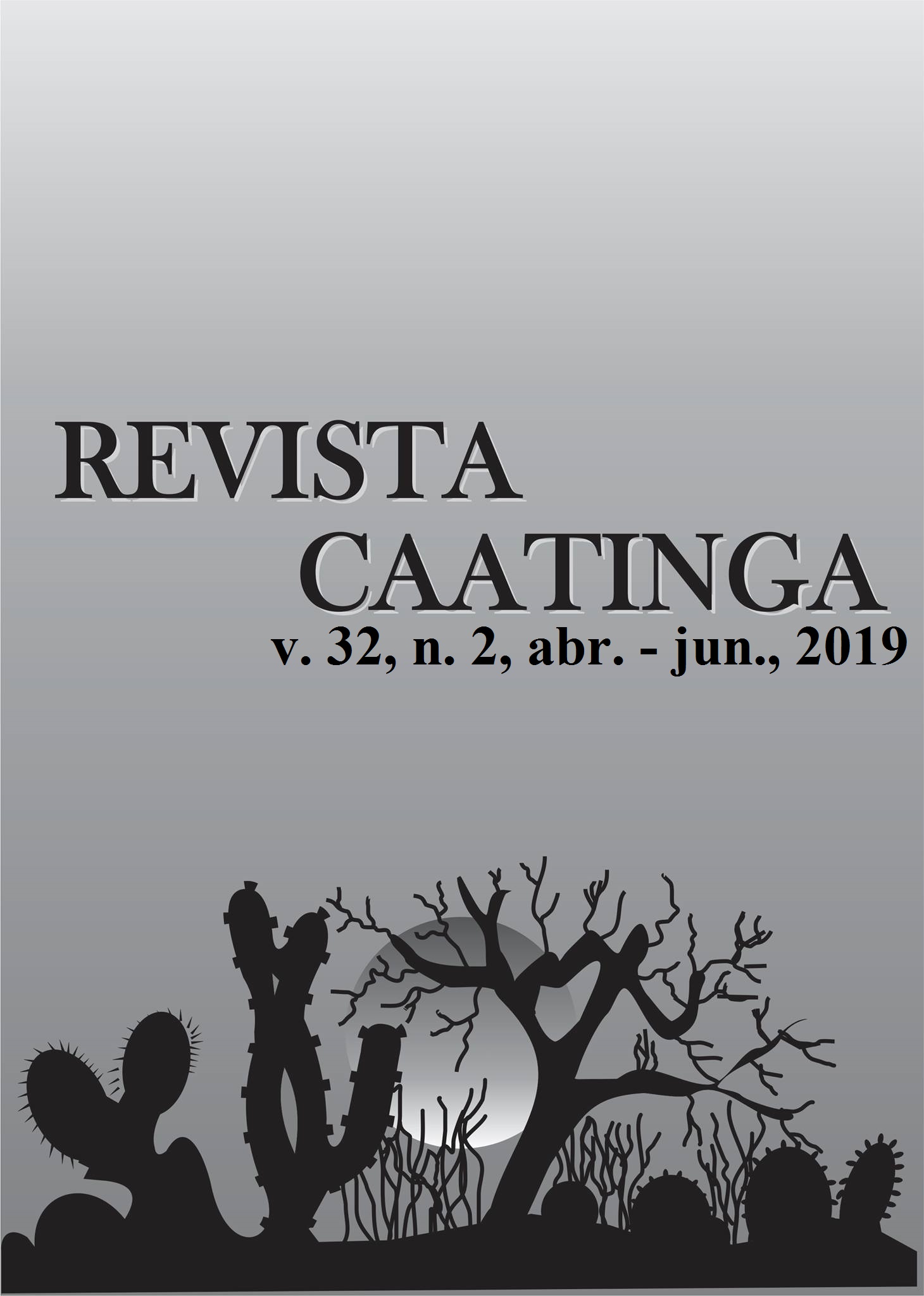WATER AVAILABILITY IN A PLANOSOL UNDER INTEGRATED CROP-LIVESTOCK-FORESTRY SYSTEM IN THE AGRESTE REGION OF PARAIBA, BRAZIL
DOI:
https://doi.org/10.1590/1983-21252019v32n218rcKeywords:
Water retention. Soil available water. ICLF.Abstract
Integrated agricultural production systems, involving agriculture, livestock, and forest are strategies that improve soil quality. The objective of this work was to evaluate the effect of the integrated crop-livestock-forest system (ICLF) on water availability of a Planosol in the Agreste region of the state of Paraíba (PB), Brazil. The experiment was conducted at the experimental site of the Agricultural Research Company of Paraíba (EMEPA), in Alagoinha, PB. The soil evaluated was a Eutric Planosol, with a moderate A horizon. The following intercrops (treatments) were implemented in June 2015: I. Gliricidia sepium + Brachiaria decumbens; II. Mimosa caesalpiniifolia + Brachiaria decumbens; III. Tabebuia alba + Brachiaria decumbens; IV. Zea mays + Brachiaria decumbens; and V. Brachiaria decumbens. A randomized block experimental design was used, with five treatments. The analyzed variables were field capacity, permanent wilting point, soil available water, granulometry, degree of flocculation, total porosity, macroporosity, microporosity, saturated hydraulic conductivity, resistance to penetration, and aggregate stability index. The results showed that the water availability in the ICLF implemented in the Agreste region of Paraíba had no significant variation after three years. After the three-year period, the ICLF promoted no significant physical improvement in the attributes of the evaluated Planosol.
Downloads
Downloads
Published
Issue
Section
License
Os Autores que publicam na Revista Caatinga concordam com os seguintes termos:
a) Os Autores mantêm os direitos autorais e concedem à revista o direito de primeira publicação, com o trabalho simultaneamente licenciado sob a Licença Creative Commons do tipo atribuição CC-BY, para todo o conteúdo do periódico, exceto onde estiver identificado, que permite o compartilhamento do trabalho com reconhecimento da autoria e publicação inicial nesta revista, sem fins comerciais.
b) Os Autores têm autorização para distribuição não-exclusiva da versão do trabalho publicada nesta revista (ex.: publicar em repositório institucional ou como capítulo de livro), com reconhecimento de autoria e publicação inicial nesta revista.
c) Os Autores têm permissão e são estimulados a publicar e distribuir seu trabalho online (ex.: em repositórios institucionais ou na sua página pessoal) a qualquer ponto antes ou durante o processo editorial, já que isso pode gerar alterações produtivas, bem como aumentar o impacto e a citação do trabalho publicado (Veja O Efeito do Acesso Livre).







